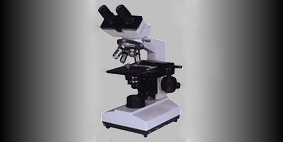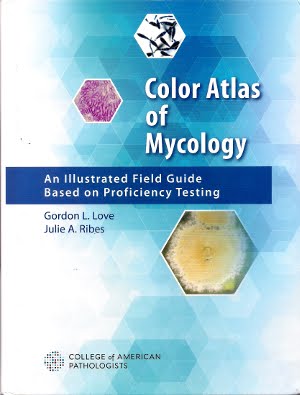Stachybotrys species
Ecology:
Stachybotrys is
a common cosmopolitan saprobe (lives on decaying vegetative material) which can
be found in soil. It is frequently found
in the indoor environment, particularly in damp areas. Anyone who has removed water damaged
wallpaper or lifted soggy cardboard boxes and found black discolouration on the
material, may very well have encountered Stachybotrys
mould. It seems to particularly like to
feast on the glues used in wallpaper and paper tape adhesives. That powdery black residue on water damaged
books may also yield Stachybotrys. Stachybotrys
may contain up to fifty species though I suspect this is under review using
molecular methods.
Pathogenicity:
Stachybotrys has long been considered as non-pathogenic
to humans or animals. More recently,
evidence has been gathering that, although not a source of topical or
systematic infection, the mould may be responsible for toxicosis following
inhalation of the spores. It has been suspected as a cause of
acute idiopathic pulmonary haemorrhage in infants, but its complete relation to
human diseases is not yet fully understood.
The
fungus has also been implicated in what has been termed ‘sick building
syndrome’. Buildings which have an
overall moisture problem, or those that have had been damaged by flood waters
may be prone to extensive Stachybotrys
(and other) fungal invasion. Wall
coverings, ceiling tiles, and gypsum (sheet rock) wall boards and jute
floorcoverings may all be contaminated.
Unless extensive renovations are undertaken, occupants may develop
fatigue, headaches, chest tightness, mucous membrane irritation and pulmonary
disease as a result of the fungal infestation.
Animals
and horses in particular, may develop, what has been termed
stachybotryotoxicosis after ingestion of feed (hay, etc.) heavily contaminated
with Stachybotrys chartarum. It is characterized as an irritation
of the mouth, throat, and nose which may lead to dermal necrosis and possible
shock. Stachybotrys chartarum is known to produce a variety of toxins;
macrocytic trichothecenes and related trichoverroids: roridin E and L-2;
satratoxins F, G, and H; isosatratoxins F, G, and H; verrucarins B and J; and
the trichoverroids, trichoverrols A and B and trichoverrins A and B.
According to the Center for Disease Control and
Prevention, "The term 'toxic mould' is not accurate. While certain moulds
are toxigenic, meaning they can produce toxins (specifically mycotoxins), the
moulds themselves are not toxic, or poisonous.
Macroscopic Morphology:
Note: Sadly I have no photos of Stachybotrys colonies to share with the reader. A colleague provided swabs from blackened areas on damp washroom wallboard during a renovation. Days later, a quick adhesive tape mount of preliminary growth revealed the Stachybotrys posted below. Unfortunately it was quickly overgrown by other moulds present in the same sample and at a particularly busy time in the lab, I could not devote more time to its isolation. My hope was to obtain the mould from some other source at a more convenient time, which sadly, never came. 'Google Images' brings up a number of images of both the colonies on mycological media as well as 'in-situ' -on walls etc. Permissions could not be obtained to link to the photo which I felt best represented this mould's growth.
Stachybotrys exhibits rapid growth, maturing in three to four days. It has a powdery to cottony texture.
The surface colouration is initially white but quickly
becomes
black but may also exhibit pink
or orange on the surface depending on the growth medium and species.
The reverse is also dark brown or black
Microscopic Morphology:
Stachybotrys has hyphae which are septate and hyaline when young but may darken
with maturity.
Conidiophores may also be hyaline or may develop an
olivaceous or dark pigmentation. The conidiophores may be septate, simple or branched. Conidiophores may show a rough-wall texture,
particularly at the upper part, near the phialides.
Phialides (9-14 µm in length) may be hyaline, olivaceous to black in colour. They are ellipsoidal in shape and form in groups of
3 to 10 at the apex of the conidiophore
Phialides produce conidia singly and successively into a
slime droplet that covers the phialides.
The conidia are 7 to 12 by 4 to 6 µm, black, unicellular, ellipsoidal
in shape and smooth to rough-walled. Conidia are borne in slimy masses at the apices of the
phialides.
Stachybotrys species -phialides are 9-14 µm in length and are borne in slimy masses at the apices of the
phialides.
Stachybotrys species -phialides are ellipsoidal in shape and form in groups of
3 to 10 at the apex of the conidiophore. The phialides are 9-14 µm in length.
(1000X, LPCB, DMD-108)
Stachybotrys species -conidiophores may show a rough-wall texture,
particularly at the upper part, near the phialides.
Stachybotrys species - conidiophores may be septate, simple or branched. Here both septation and branching are clearly visible.
(1000X, LPCB, DMD-108)
Stachybotrys species -conidia are 7 to 12 by 4 to 6 µm, black, unicellular, ellipsoidal
in shape and smooth to rough-walled. In this photo the slimy mass of conidia have been disrupted.
Stachybotrys species -This photo again shows a disrupted mass of ellipsoidal conidia. The dark pigmentation obliterated fine detail. Rough texture on the upper portion of the phialide is evident.
(1000X, LPCB, DMD-108)
Stachybotrys species -conidiophores may also be hyaline or may develop an
olivaceous or dark pigmentation. (1000X, LPCB, DMD-108)
Stachybotrys species -hyphae are septate and hyaline when young but may darken
with maturity.
Notes:
Stachybotrys is
highly cellulolytic which is why it enjoys growing on the various substrates
already mentioned. It grows quite readily
in materials low in nitrogen.
Stachybotrys differs
from Memnoniella by not producing
conidia in chains
While both the above genera are environmental
contaminants, they are seldom isolated in the clinical laboratory.
Stachybotrys
grows well at 37ᵒC
One method of isolating or recovering Stachybotrys is to streak suspected
conidia from the source onto dampened filter paper (eg. Whatman). Incubate the paper at 25 to 30ᵒC for about a
week and look for dark patches. Transfer
any growth to Sabouraud Dextrose Agar or Corn Meal Agar. Some sources claim that the fungus grows
better on less nutritious media and this feature may assist in isolating it
from more fastidious, yet fast growing fungi.
* * *









.jpg)























